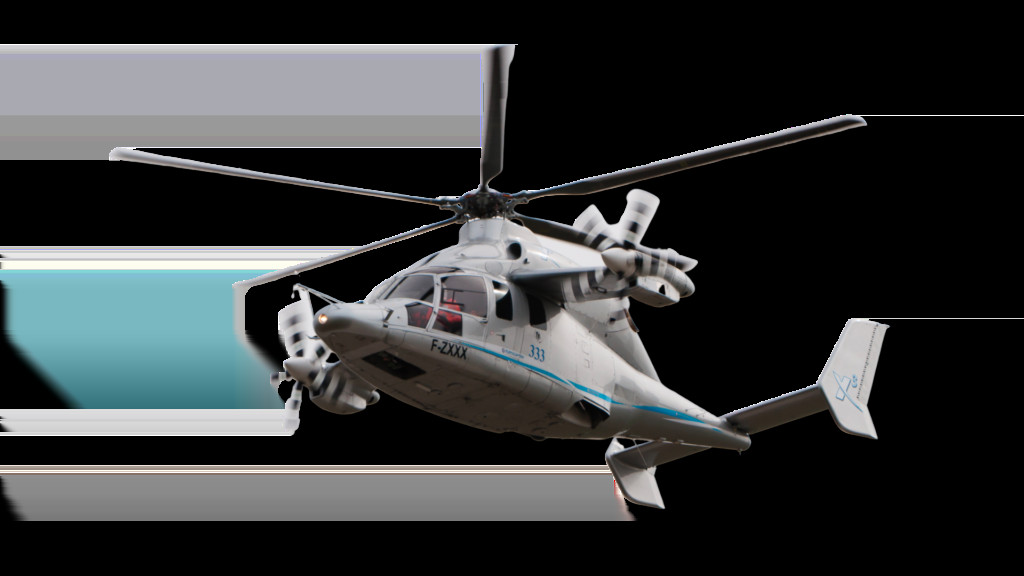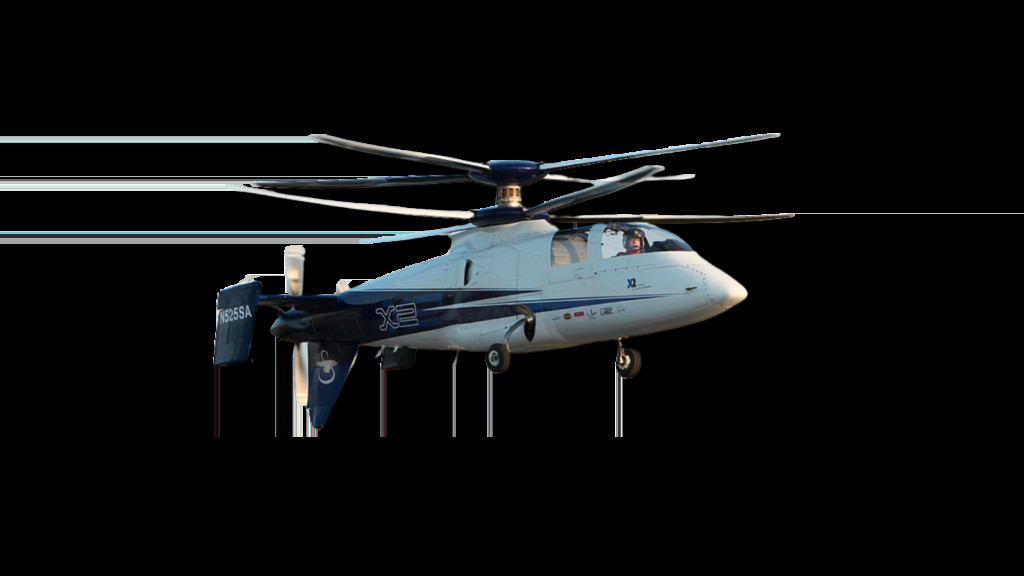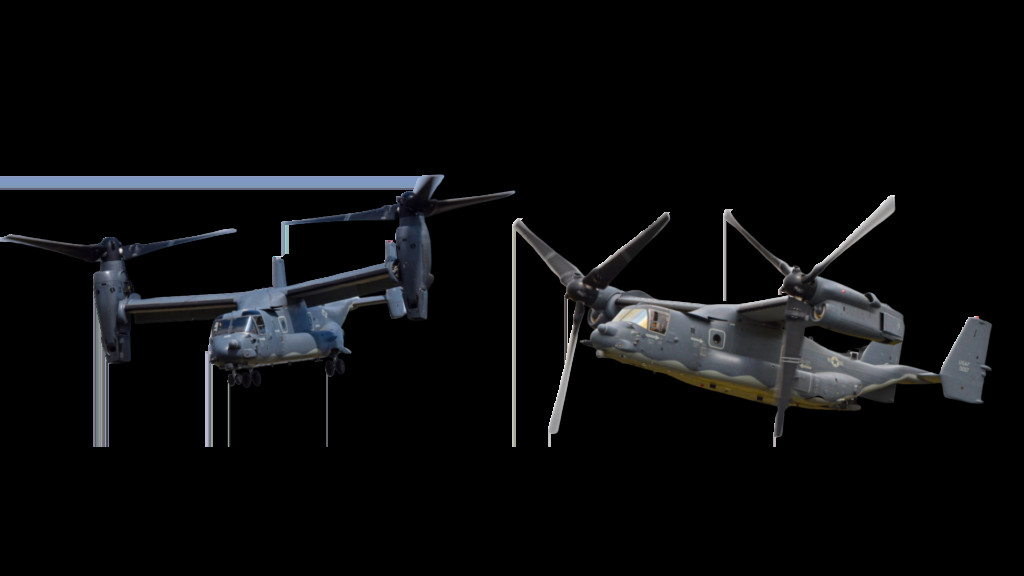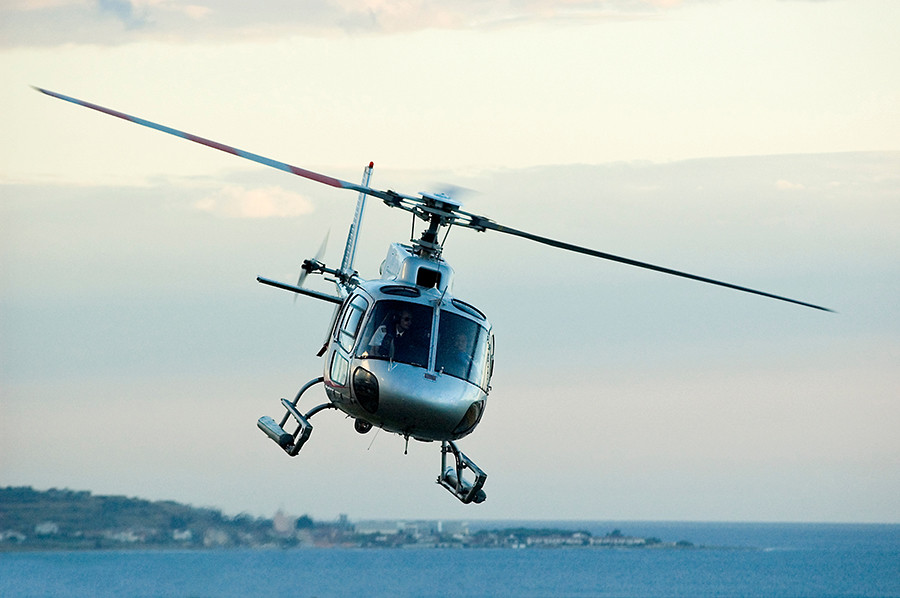Do you ever wonder how fast helicopters fly compared to airplanes? Helicopters are versatile machines capable of hovering and landing in tight spots. However, when it comes to speed, they often lag behind fixed-wing aircraft. At flyermedia.net, we’ll delve into the world of helicopter speeds, exploring the factors that limit their velocity and showcasing some of the fastest helicopters ever built.
Discover interesting facts about rotorcraft, blade stall, and air compressibility as we address common misconceptions about helicopter flight.
1. What Is the Average Speed of Helicopters?
The average speed of a helicopter is generally less than 160 knots (184 mph). The average cruising speed of a helicopter is significantly slower than that of fixed-wing aircraft, which can reach speeds as high as 450 knots (517 mph). While fixed-wing aircraft can cross continents at speeds approaching Mach 1 (the speed of sound), helicopters are not designed for such high-speed travel.
Helicopters prioritize maneuverability and vertical takeoff and landing capabilities over sheer speed. This makes them ideal for various applications where fixed-wing aircraft are not suitable, such as search and rescue operations, medical evacuations, and aerial cinematography. The design and aerodynamics of helicopters are optimized for these specific tasks, which inherently limit their forward speed. According to research from Embry-Riddle Aeronautical University, helicopters are vital for urban air mobility due to their ability to operate in confined spaces.
2. What Are the Maximum Speeds of Popular Helicopters?
Popular helicopters rarely exceed 150 knots (173 mph) with very few being able to reach 175 knots (201 mph).
Here’s a list of the maximum speeds for some well-known helicopter models:
| Helicopter Model | Max Speed (knots) | Max Speed (MPH) |
|---|---|---|
| Robinson R22 | 102 | 117 |
| Robinson R44 | 130 | 149 |
| Bell 206 | 120 | 138 |
| Airbus Eurocopter EC120 | 150 | 173 |
| Airbus H175 / Eurocopter EC175 | 170 | 196 |
| AgustaWestland AW109 Power | 168 | 193 |
| AgustaWestland AW139 | 167 | 192 |
| Ka-62 | 160 | 184 |
| Sikorsky H92 | 165 | 190 |
| AgustaWestland AW189 | 169 | 194 |
| Airbus H155 / Eurocopter EC155 | 175 | 201 |
| Airbus H225 / Eurocopter EC225 | 175 | 201 |
While these helicopters are widely used and recognized, they are not designed for high-speed flight. Their primary focus is on reliability, safety, and versatility for various operational needs.
3. What Are Some of the World’s Fastest Helicopters?
Some helicopters can achieve significantly higher speeds than the average models, with the Westland Lynx, Eurocopter X3, Sikorsky X2, and Bell/Boeing V-22 Osprey being some of the fastest.
Let’s take a closer look at these exceptional machines:
3.1. Westland Lynx
 Westland Lynx helicopter soaring through the sky
Westland Lynx helicopter soaring through the sky
The Westland Lynx once held the title of the world’s fastest rotary aircraft. In 1986, a military version of this helicopter set a world rotary speed record of 217 knots (250 mph). This record stood for many years, showcasing the Lynx’s exceptional engineering and performance.
3.2. Eurocopter X3
 Eurocopter X3 innovative helicopter design
Eurocopter X3 innovative helicopter design
The Eurocopter X3 can reach speeds of up to 255 knots (293 mph). However, it is classified as a gyrodyne, a hybrid between a helicopter and an airplane. Its rotors are sometimes used similarly to propellers, facing horizontally rather than vertically.
3.3. Sikorsky X2
 Sikorsky X2 high-speed helicopter prototype
Sikorsky X2 high-speed helicopter prototype
The Sikorsky X2 reached speeds of around 250 knots (288 mph) in 2010. Like the Eurocopter X3, the X2 features a propeller in addition to conventional rotors, which significantly contributes to its high-speed capabilities.
3.4. Bell/Boeing V-22 Osprey
 Bell Boeing V-22 Osprey tiltrotor aircraft
Bell Boeing V-22 Osprey tiltrotor aircraft
The Bell/Boeing V-22 Osprey uses tilt-rotors to transform itself from a helicopter to a fixed-wing aircraft and back again. In helicopter mode, the Osprey has a maximum recorded speed of about 275 knots (316 mph), making it the fastest helicopter in the world. It is primarily used by the U.S. Military.
4. Why Can’t Helicopters Fly as Fast as Airplanes?
Helicopter aerodynamics differ significantly from fixed-wing aircraft, limiting their speed due to the way lift is generated. The design and mechanics of a helicopter’s rotor system, while allowing for unique maneuverability, also impose constraints on its maximum achievable speed. Understanding these limitations requires delving into the principles of helicopter flight and the challenges they face at high speeds.
5. How Do Helicopters Fly?
Helicopters fly by using rotating rotor blades to generate lift. When the rotor blades spin, they create an airflow that produces lift, allowing the helicopter to ascend. The rotor blades act as the wings of the helicopter, and their rotation provides the necessary force to counteract gravity.
However, when the helicopter starts moving forward, the airflow over the advancing blade (the one moving towards the airflow) becomes faster than the airflow over the retreating blade (the one moving away from the airflow). This imbalance in lift can cause the helicopter to roll over and crash.
To solve this problem, early helicopter designers incorporated a mechanism called “flapping to equality.” This allows the blades to flap up and down while rotating, equalizing the amount of lift across the blades and maintaining stability. This technique was inspired by the autogyro, invented in the 1920s by Juan de la Cierva.
6. What Is the Phenomenon of Flapback?
Flapback is a phenomenon that occurs when the cyclic (joystick) is moved forward to increase speed. The rotor disc (the hypothetical disc made by the spinning rotor blades) tilts forward initially but then flaps back. This requires further forward movement of the cyclic to continue accelerating.
Flapback occurs throughout the entire speed range of the helicopter. Pilots must continually push the cyclic further forward to maintain speed, giving the sensation that the helicopter is trying to slow down. According to the FAA Helicopter Flying Handbook, understanding flapback is crucial for effective helicopter control.
7. What Is Airflow Reversal and How Does It Affect Helicopter Speed?
Airflow reversal occurs as the helicopter flies faster, increasing the difference between the relative speeds of the advancing and retreating blades.
For example, if a helicopter is moving forward at 20 knots and the blades are rotating at X knots, the advancing blade moves at X + 20 knots, while the retreating blade moves at X – 20 knots. The difference in airspeed between the advancing and retreating blades is 40 knots. However, if the helicopter is moving at 100 knots, this difference becomes 200 knots.
Eventually, the root of the retreating blade will have zero airspeed because the helicopter is moving forward faster than that section of the blade is rotating. This section of the rotor blade cannot produce any lift. The outer part of the retreating blade must work harder to compensate, operating at a higher angle of attack through more flapping.
At maximum forward speed, up to 40% of the retreating blade may be affected by reverse flow. This is not an efficient way for the helicopter to operate, and there is a limit to how far this can go before the retreating blade stalls.
8. What Is Retreating Blade Stall?
 Illustration of retreating blade stall on a helicopter rotor
Illustration of retreating blade stall on a helicopter rotor
Retreating blade stall occurs when the angle of attack of the retreating blade increases beyond a certain point, causing the blade to stall. This typically starts at the tip of the blade, where the angle of attack is highest, and spreads inward to the root.
When a retreating blade stall occurs, the blade ceases to produce lift, causing the helicopter to pitch its nose up and roll to one side. The first signs of a retreating blade stall are vibration and rotor roughness.
Pilots can correct a retreating blade stall by lowering the collective to decrease the blade pitch angles and using the aft cyclic to slow the helicopter down. However, it is important for pilots to recognize the symptoms of a retreating blade stall and take corrective action before the situation becomes catastrophic.
According to the Aircraft Owners and Pilots Association (AOPA), understanding and preventing retreating blade stall is critical for helicopter safety.
9. How Does Air Compressibility Limit Helicopter Speed?
Air compressibility is another aerodynamic factor that limits high-speed helicopter flight. As airspeeds approach the speed of sound, the character of the airflow changes, and compressibility must be taken into account.
Even if the helicopter is not moving at speeds approaching the speed of sound, the rotor blades can experience these effects. In forward flight at 150 knots, the advancing blade tip of a typical turbine helicopter has a speed of around 295 meters per second, which is very close to the speed of sound at sea level (340 meters per second).
At these speeds, compressibility becomes significant, requiring more power for the same rotor thrust and potentially producing shock waves with increasing vibration and noise. This limits the helicopter’s speed.
10. What New Innovations Are Being Developed to Increase Helicopter Speed?
New types of helicopters are constantly being developed to push the boundaries of speed and performance. Many of these super-fast helicopters incorporate additional propellers as well as conventional rotors, which makes a significant difference. These hybrid designs aim to overcome the limitations of conventional helicopters and achieve higher speeds.
These innovations highlight the ongoing efforts to enhance helicopter technology and explore new possibilities in rotary-wing aviation.
11. What Are the Key Differences Between Helicopters and Airplanes That Affect Speed?
Helicopters rely on rotor blades for both lift and propulsion, while airplanes use fixed wings for lift and propellers or jet engines for propulsion. This fundamental difference in design leads to significant variations in their aerodynamic characteristics and speed capabilities. According to a NASA report on advanced rotorcraft technology, the trade-offs between lift and drag are more pronounced in helicopters, limiting their maximum speed.
Here’s a comparison table highlighting the key differences:
| Feature | Helicopter | Airplane |
|---|---|---|
| Lift Source | Rotating rotor blades | Fixed wings |
| Propulsion | Rotor blades (and sometimes tail rotor) | Propellers or jet engines |
| Aerodynamics | Complex airflow, retreating blade stall | Simpler airflow, less prone to stall |
| Speed | Lower average and maximum speeds | Higher average and maximum speeds |
| Maneuverability | High maneuverability, vertical takeoff/landing | Lower maneuverability, requires runway |
12. How Does Helicopter Design Affect Its Speed Capabilities?
The design of a helicopter significantly impacts its speed capabilities. Conventional helicopters are limited by factors such as flapback, airflow reversal, retreating blade stall, and air compressibility. To overcome these limitations, engineers have developed innovative designs such as gyroplanes and tilt-rotor aircraft. These designs incorporate features that allow for higher speeds while maintaining the unique capabilities of a helicopter. According to research from the American Helicopter Society, advancements in blade design and rotor systems are crucial for improving helicopter speed.
13. What Are the Practical Implications of Helicopter Speed Limitations?
The speed limitations of helicopters have practical implications for their use in various applications. While helicopters excel in maneuverability and vertical takeoff/landing capabilities, their slower speeds may be a disadvantage in situations where rapid transit is required. However, helicopters remain essential for missions where fixed-wing aircraft cannot operate, such as search and rescue operations, medical evacuations, and aerial surveys. The United States Coast Guard relies heavily on helicopters for its search and rescue operations due to their ability to operate in challenging environments.
14. What Role Does the Pilot Play in Maximizing Helicopter Speed?
The pilot plays a crucial role in maximizing helicopter speed while ensuring safety and stability. Pilots must be aware of the factors that limit helicopter speed, such as flapback, airflow reversal, and retreating blade stall, and take appropriate actions to mitigate these effects. Proper training and experience are essential for pilots to safely operate helicopters at their maximum speeds. The Helicopter Association International (HAI) provides resources and training programs to help pilots enhance their skills and knowledge.
15. What Are Some Common Misconceptions About Helicopter Speed?
One common misconception is that helicopters can fly as fast as airplanes. While some advanced helicopter designs can achieve impressive speeds, they are generally slower than fixed-wing aircraft due to the aerodynamic limitations of their rotor systems. Another misconception is that increasing engine power will always result in higher speeds. In reality, factors such as blade design and air compressibility also play a significant role in determining a helicopter’s maximum speed. Addressing these misconceptions is important for a better understanding of helicopter capabilities.
FAQ: How Fast Do Helicopters Fly?
1. What is the fastest speed a helicopter has ever reached?
The Bell/Boeing V-22 Osprey has reached speeds of up to 275 knots (316 mph) in helicopter mode, making it the fastest helicopter.
2. Why are helicopters slower than airplanes?
Helicopters are slower due to aerodynamic limitations related to their rotor systems, including flapback, airflow reversal, retreating blade stall, and air compressibility.
3. Can helicopters fly faster than 200 mph?
Yes, some advanced helicopter designs can exceed 200 mph, but most conventional helicopters have a maximum speed below this threshold.
4. What is retreating blade stall and how does it affect helicopter speed?
Retreating blade stall occurs when the angle of attack of the retreating blade increases beyond a certain point, causing the blade to stall and lose lift, which limits the helicopter’s speed.
5. How does air compressibility affect helicopter speed?
Air compressibility becomes significant at high airspeeds, requiring more power for the same rotor thrust and potentially producing shock waves, which limits the helicopter’s speed.
6. Are there any new technologies that could increase helicopter speed?
Yes, new technologies such as advanced blade designs, tilt-rotor systems, and gyroplanes are being developed to increase helicopter speed.
7. What is the typical cruising speed of a helicopter?
The typical cruising speed of a helicopter is generally less than 160 knots (184 mph).
8. How does helicopter design affect its speed capabilities?
Helicopter design plays a crucial role in determining its speed capabilities, with factors such as blade design, rotor systems, and overall aerodynamics influencing its maximum speed.
9. What are the main factors that limit helicopter speed?
The main factors that limit helicopter speed include flapback, airflow reversal, retreating blade stall, and air compressibility.
10. What role does the pilot play in maximizing helicopter speed?
The pilot plays a crucial role in maximizing helicopter speed by being aware of the factors that limit speed and taking appropriate actions to mitigate these effects.
Conclusion
While helicopters may not be as fast as fixed-wing aircraft, their unique maneuverability and vertical takeoff/landing capabilities make them indispensable for a wide range of applications. Understanding the factors that limit helicopter speed allows us to appreciate the engineering challenges involved in designing and operating these versatile machines. Stay informed about the latest developments in aviation technology and explore career opportunities in the industry at flyermedia.net.
Ready to take your passion for aviation to new heights? Visit flyermedia.net today to discover top-rated flight schools, breaking aviation news, and exciting career paths in the USA. Whether you dream of becoming a pilot, engineer, or aviation technician, your journey starts here. Explore flyermedia.net now and take the first step toward your aviation adventure. Reach us at Address: 600 S Clyde Morris Blvd, Daytona Beach, FL 32114, United States. Phone: +1 (386) 226-6000.
